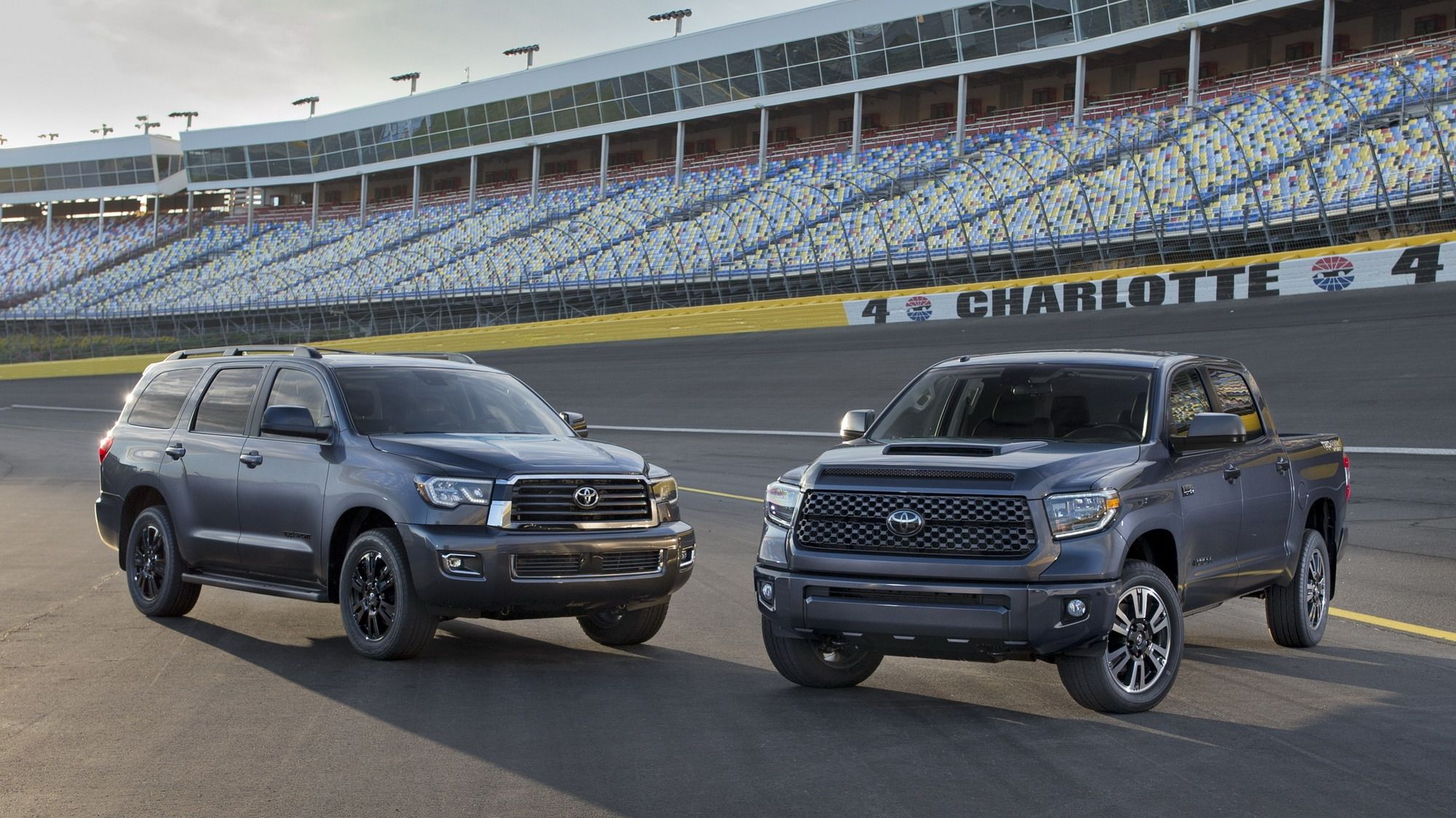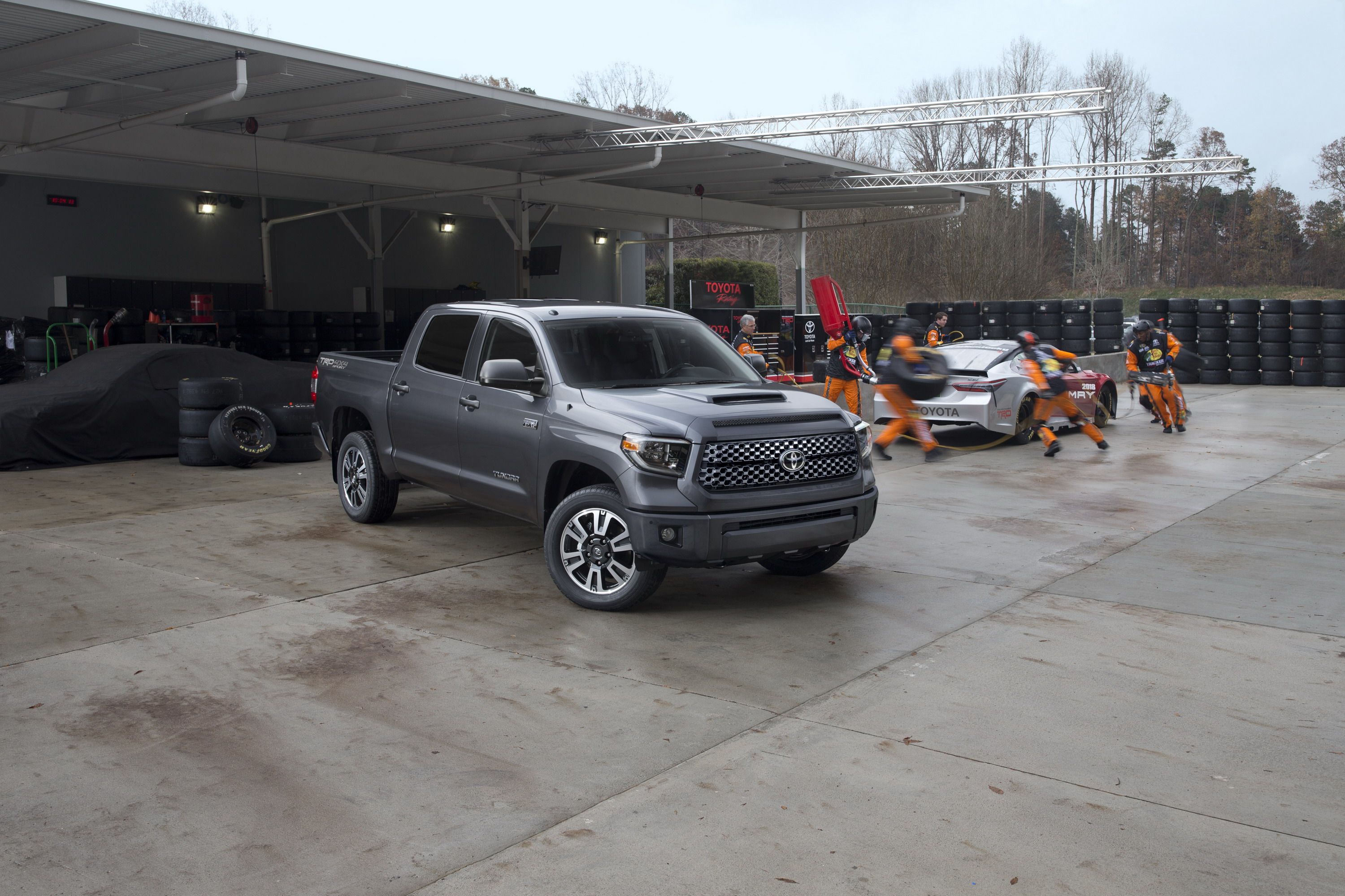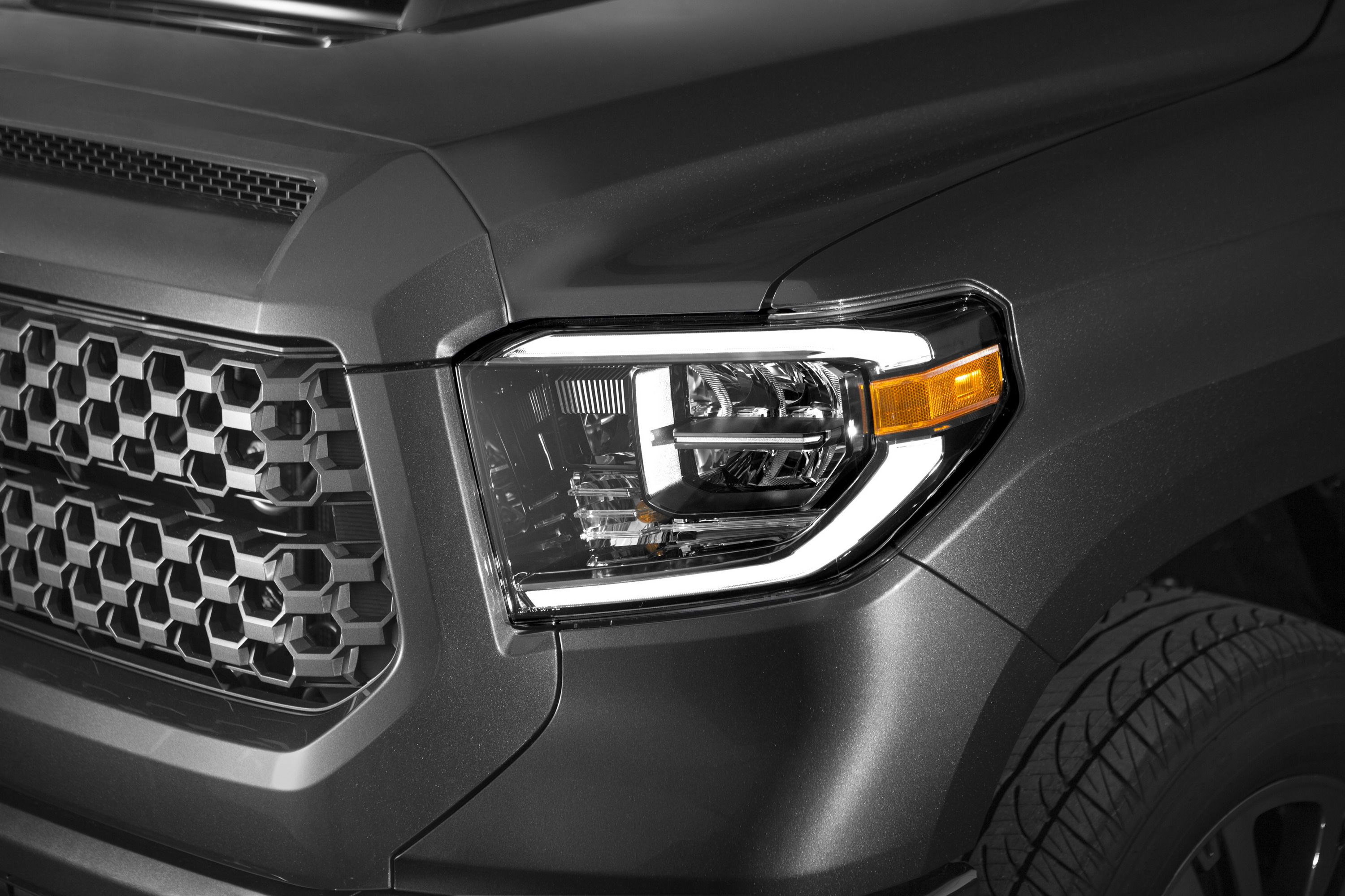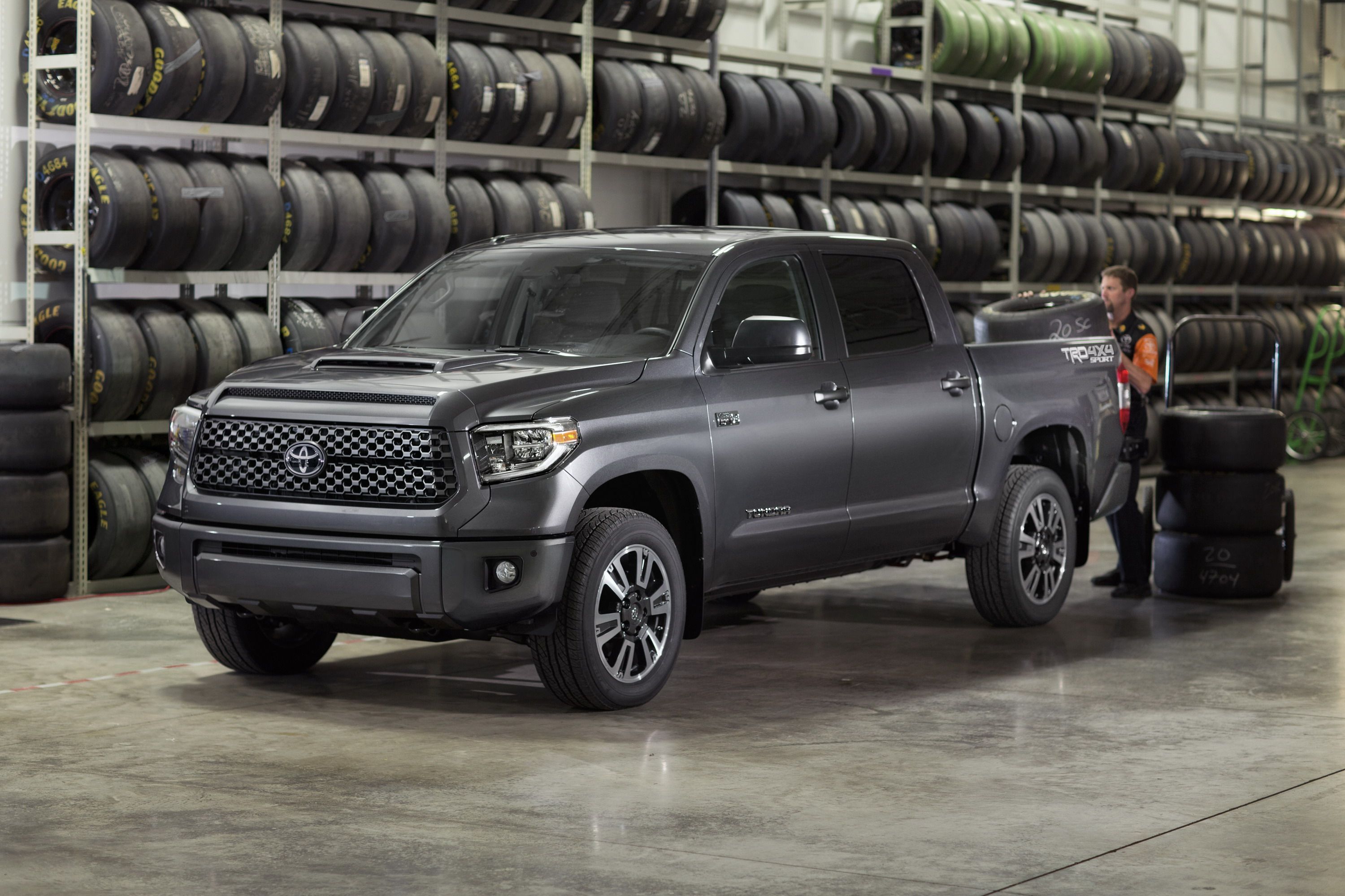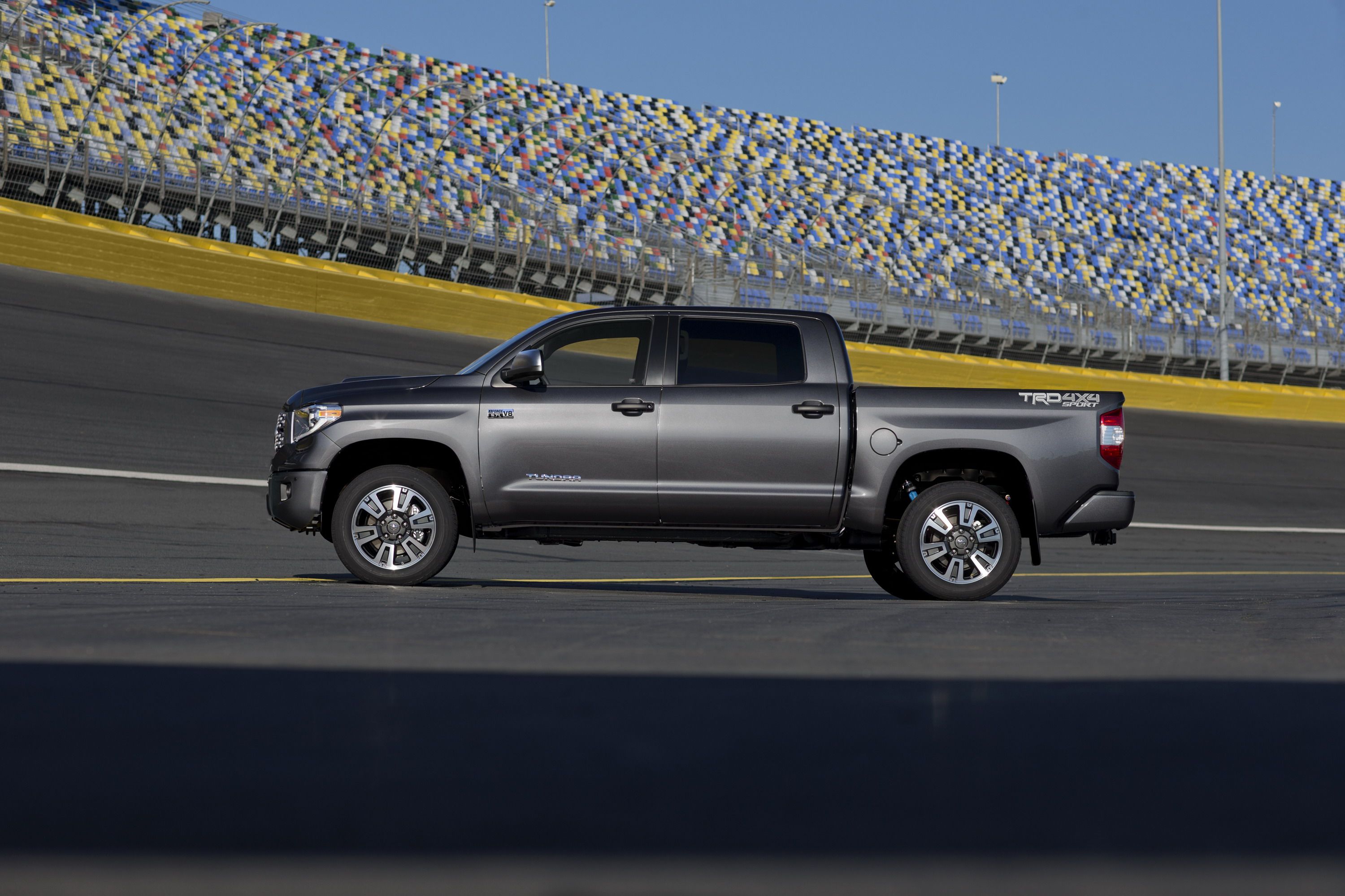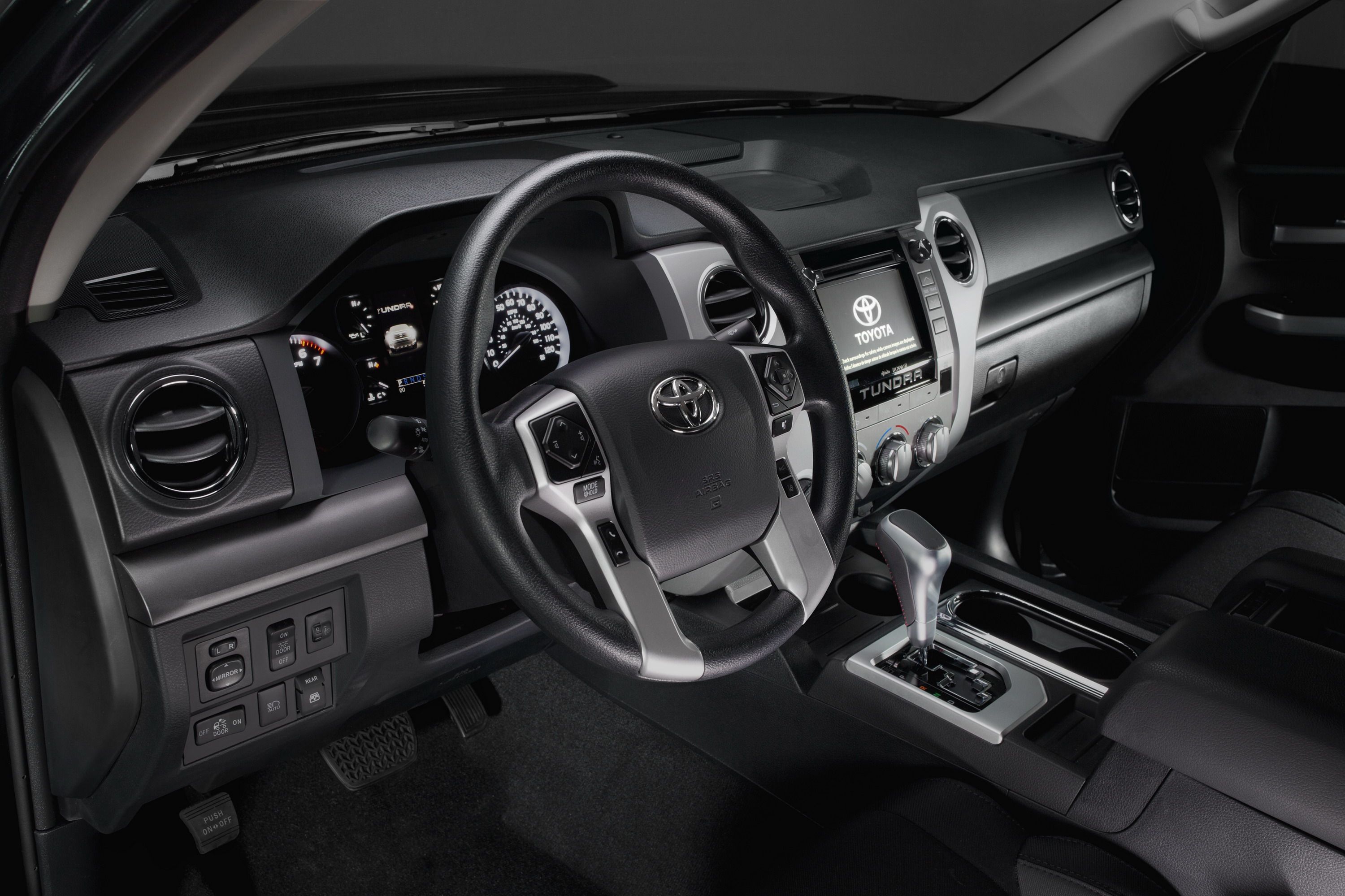The current Toyota Tundra has been around since 2007 and has undergone only one update in the last decade. It was the 2014 model year that brought the upgraded styling and improved interior. Aside from that, the truck remains the oldest full-size pickup in the American market. Thankfully Toyota is giving the Tundra some attention for the 2018 model year, adding both new active safety systems and a new trim level – the TRD Sport.
These updates are a drop in the bucket compared to a full-scale update, but they certainly help keep the Tundra (and the 2018 Sequoia, which shares the updates) trekking in modern times. Of course, the off-road-focused Tundra TRD Pro is a newer development, but aside from its suspension, its bones haven’t changed. And keep in mind the Tundra’s competition: the perpetually updated Ford F-150, the Chevy Silverado and GMC Sierra, Ram 1500, and the all-new Nissan Titan.
Despite the updates for 2014, the Tundra continues to utilize the same underpinning from 2007. These include the C-channel frame, 5.7-liter i-Force V-8, and six-speed automatic transmission. Toyota Tundra head engineer Mike Swears says the 5.7-liter might not employ head-turning technology like turbocharging or cylinder deactivation, but the dual-overhead cam V-8 with variable valve timing is still an advanced engine with a clean reliability record. Reliability, after all, is what Toyota hangs its hat on.
So what are these changes all about? Keep reading for the full run-down.
Continue reading to learn more about the Toyota Tundra TRD Sport Package.
2018 Toyota Tundra TRD Sport Package
- Make: Array
- Model: 2018 Toyota Tundra TRD Sport Package
- [do not use] Vehicle Model: Array
What makes the Toyota Tundra TRD Sport Package special
The headlining update for 2018 is the addition of the TRD Sport trim package. The TRD Sport package can already be found on the mid-size Tacoma pickup. It represents the sportier side of TRD’s three-tier trim packages. There’s the street-smart TRD Sport, the off-road capable TRD Off-Road, and the highly capable off-road package, the TRD Pro. And like the Tacoma TRD Sport, the Tundra (and Sequoia) receives an updated suspension and trim-specific appearance add-ons.
The Tundra TRD Sport gets a unique, two-level grille color-keyed to match the body color. The bumpers and side mirror caps are also color matched, giving the truck a monochromatic theme. A non-functional hood scoop and updated headlights round out the exterior updates. Those headlights now feature LED technology with LED daytime running lights. The fog lights are also LEDs. Furthermore, the TRD Sport adds 20-inch alloy wheels and the LED fog lights. Things inside change even less, with the only additions being a TRD-branded gear shifter and TRD Sport-branded floor mats.
Mechanical changes also make their way onto the Tundra by checking the TRD Sport option box. TRD-branded and sport-tuned Bilstein shock absorbers are mounted at each corner for an improved on-road feel. Thicker TRD-branded anti-sway bars are bolted on at both front and rear ends. Otherwise, the independent front suspension and leaf spring rear suspension remain unchanged.
Also unchanged is the 5.7-liter i-Force V-8. It continues to produce a respectable 381 horsepower and 401 pound-feet of torque. A six-speed automatic is standard equipment, while an electronically controlled, two-speed transfer case is optional. The 4WD system also includes Toyota’s A-TRAC system, which uses the brakes as a substitute for a locking differential. A-TRAC keeps wheel spin to a minimum by applying the brakes to wheels with no traction, forcing torque to the wheels with traction.
Subjectively, I’ve found the 5.7-liter V-8 to be a sweet engine that’s best paired with the optional TRD cat-back exhaust system. A throaty roar accompanies generous amounts of acceleration. Fuel economy is the V-8’s biggest downfall. In a Tundra Crew Cab with RWD, the truck only earns an EPA-estimated 13 mpg city, 18 mpg highway, and 15 mpg combined.
Toyota is on a quest to add its suite of active safety systems to its full vehicle lineup. Called the Toyota Safety Sense-P, or TSS-P, the suite includes Pre-Collision System with automatic emergency braking; Lane Departure Alert; Automatic High Beams; Pre-Collision with Pedestrian Detection Function; and Dynamic Radar Cruise Control. TSS-P comes standard on all but the base trim levels of most of its models, including the Tundra.
These active systems will likely garner attention from customers, but the Tundra still falls short in crash testing by the Insurance Institute for Highway Safety. The truck scores a Marginal in the IIHS’ small-overlap front crash test and an Acceptable in roof strength. Its rear child seat LATCH system only scored a Marginal for ease-of-use, and its headlights scored a Poor in the IIHS’ new headlight evaluations for 2017. The Tundra does earn a Good rating in the Moderate-overlap, side impact, and head restraints and seating tests. The Tundra does not earn a Top Safety Pick award for 2017 and that won’t change until Toyota updates the Tundra’s structure to accommodate for the small-overlap crash test and reinforce the roof structure. It will be interesting to see how the Tundra’s new headlights fair is the IIHS’ new headlight evaluations.
But safety ratings aren’t what the 2018 updates are about. Rather, the Tundra is now a more appealing truck for those who want a “custom” truck with better on-road handling and who appreciate a helping from modern active safety equipment.
The TSS-P system will come standard on most Tundra trim levels, while updated grilles and the new headlights are seen on the Limited and 1794 Editions. The headlights will also be available on the SR5 trim when paired with the TRD Off-Road package.
Toyota has not released pricing for the 2018 Tundra, but we suspect only a slight increase over the 2017 model year. Prices currently range from around $30,000 to upwards of $50,000.

